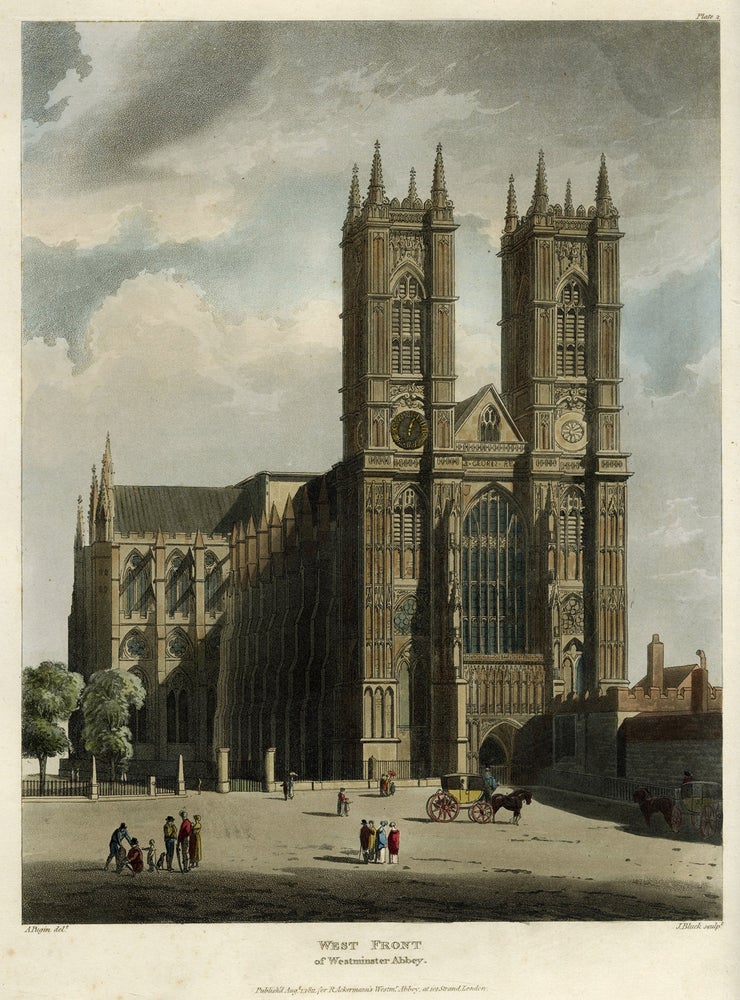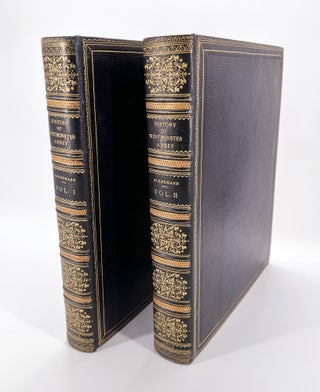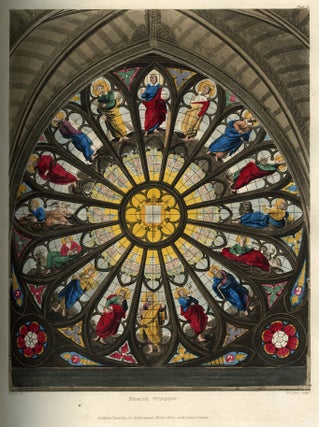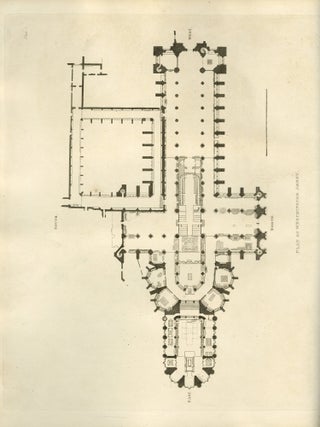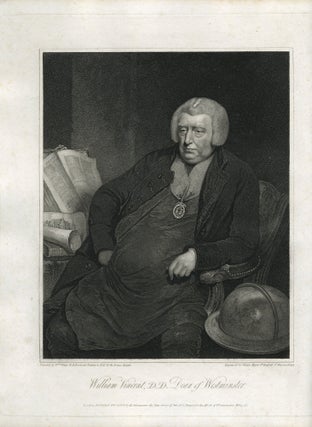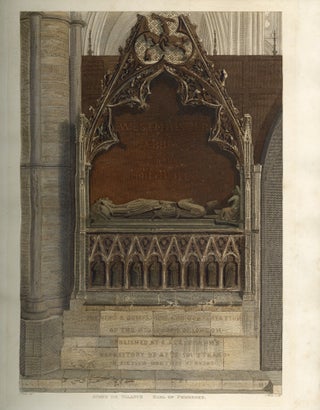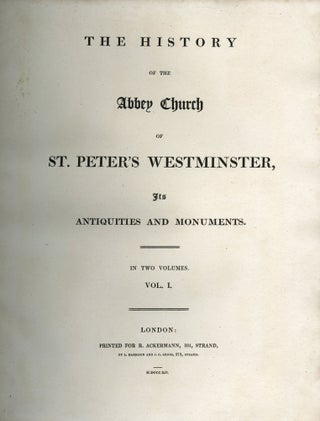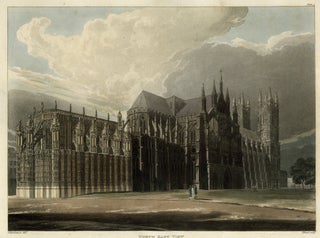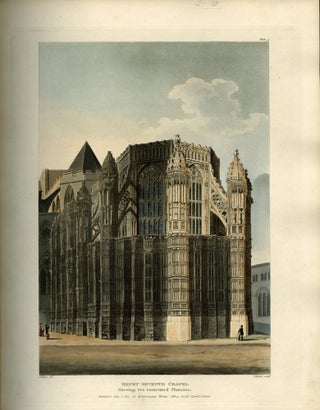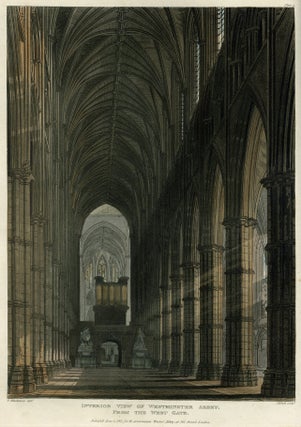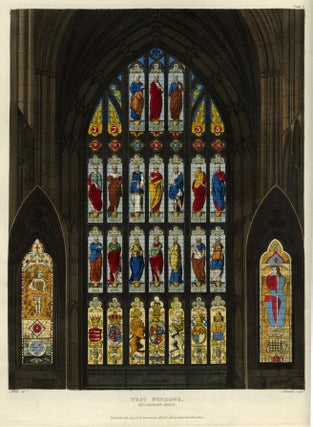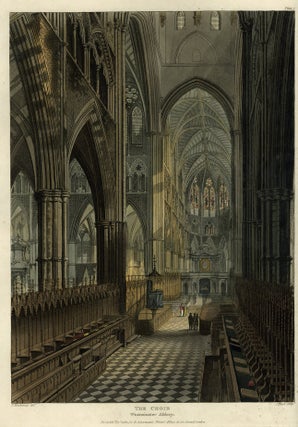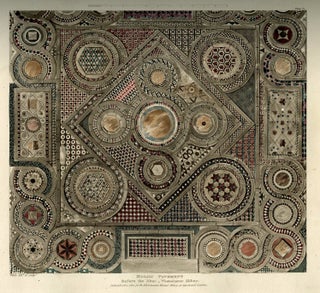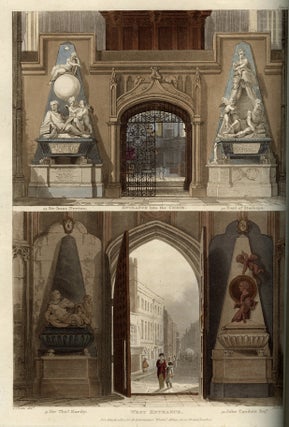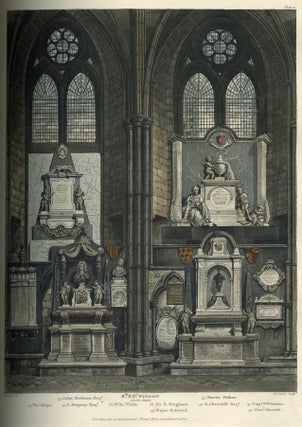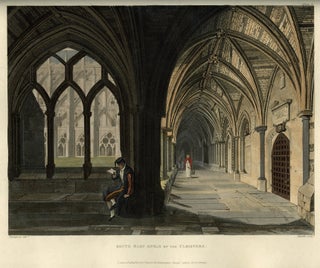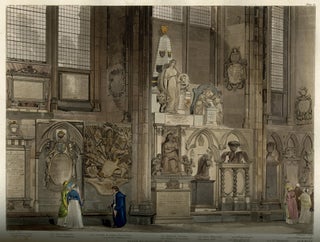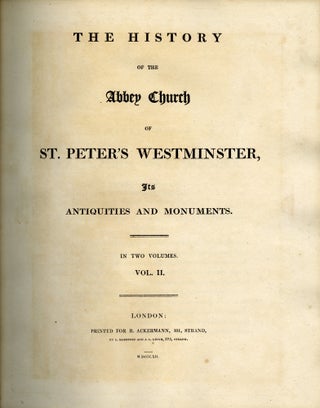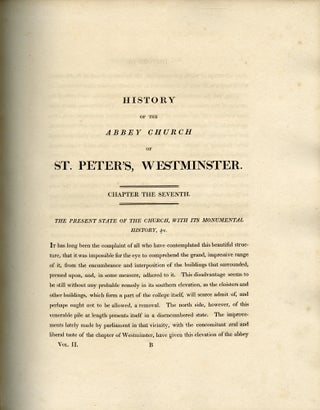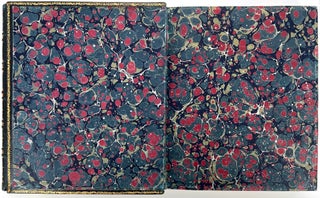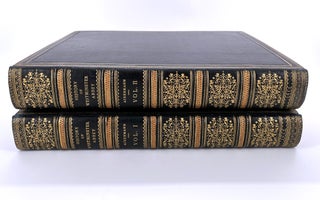The History of the Abbey Church of St. Peter's Westminster; Its Antiquities and Monuments
London: R. Ackermann, 1812. First Edition, second issue. In Two volumes, large 4to; 12 3/4 x 10 3/4 in. (325 x 272 mm), with all 83 plates, 81 of which are colored aquatints by J.Bluck, J.Hamble, T.Sutherland and others, after A.Pugin, F.Mackenzie, H.Villiers, T.Uwins, &c. Includes the half-titles; list of subscribers and arrangement of plates. Vol. 1 pp. xx + 330 + vi index, and 4 plates–2 colored aquatint plates and 2 uncolored engravings of a) floorpan b) portrait of William Vincent, Dean of Westminster opposite the dedication page. Vol. 2 pp. 275 +iv index, 79 colored aquatints. Hands binding in navy crushed morocco by Doverley and Sons, with gilt fillets and decorations on cover, scrolls on turn-ins. Spine gilt with decorations and floral patterns, gilt title and date, 5 double raised bands with four red bands; gilt decorations on edges, marbled end-papers, a.e.g. Some light offset from the plates and foxing only on the letterpress for one gathering towards the end of Vol. 2, not affecting the plates. This is the second issue, with the plate Aymer de Valence" signed "A. Pugin del't" and not the first state of the plate signed in error "F. Mackenzie" (Abbey Scenery 213 & 214). In our copy this plate is bound at the beginning of the Vol. 1, and not in Vol.2 as indicated in the arrangement of plates sheet.
[Abbey Scenery 213; Tooley 2; Prideaux p. 124-125; Lowndes vol. 7, p. 2889; Bobins 608].
A very handsome set with many brightly-colored aquatints. In the introduction of the book the author writes: "The Collegiate Church of Westminster may, without fear of contradiction, be considered as one of the most interesting edifices in the British Empire." After the success of The Microcosm of London (1808-1810) Ackerman took on the project of a two-volume work on Westminster, which was first published in sixteen monthly numbers and issued in 2 volumes in 1812.
“… Ackermann had issued his History of Westminster Abbey (1812), and when complete, he had all the original drawings for the seventy plates which had been made by Aug. Pugin, Fred Mackenzie, H. Villiers, G. Shepherd, Thompson, T. Unwin, and W. J. White, bound up with the letterpress printed on vellum, making a unique copy. Mr Papworth prepared a special design, with Gothic details, for the brass mountings and clasps for the two volumes, which cost £120. This copy Ackermann valued so highly that he used to provide a pair of white kid gloves for the use of the person to whom was granted the favour of inspecting it. He sent a copy of the book to Mr Papworth inscribed with his sincere regards and a draft for £50." [Prideaux, S. T. Aquatint Engraving; A Chapter in the History of Book Illustration. London, Duckworth & Co., 1909. p.123. According to Tooley this vellum copy with its original drawings may be see in a glass case at Westminster Abbey. [English Books with Coloured Plates; London: Bratsford, 1954; p. 7]
RUDOLPH ACKERMANN (1764 – 1834) was an German-born bookseller, inventor, lithographer, publisher and businessman. He moved to Paris at a young age and settled in London at 23. In 1795 he established a print-shop and drawing-school on the Strand, very close to the Royal Academy of Arts and his business quickly expanded and flourished. As a publisher Ackermann was both creative and efficient, bringing to the commercial production of color plate books innovative techniques and an uncompromising attention to detail which ensured uniform high quality (ODNB). He was also an innovator in carriage design and was an early adopter and promoter of gas lighting.
WILLIAM COMBE (1742 – 1823) was a British writer best known as the author of The Three Tours of Doctor Syntax, a comic poem, illustrated by artist Thomas Rowlandson's color plates. He also wrote the texts for various illustrated books, including Oxford, Cambridge and Westminster published by Ackermann.
Condition: Near fine.
Item number: 597
Price: $6,000.00
Share:
